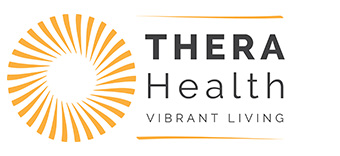The notion of household toxins conjures up images of infants and children accidentally consuming cleaning substances, or something similar. While that is definitely something to be concerned about, it does not give a full picture. On top of the products in the home that we know have a toxic component, there are also others that may not be as obvious, and these are what more people are becoming increasingly concerned about.
Not only can prolonged exposure to these toxins lead to health issues, given the nature of the products they come in, but it can also be difficult to control this exposure. What should you be looking out for and what can you do about it? Here’s a closer look.
What to Look Out For
There is a wide range of harmful toxins out there, but for the sake of clarity, we are going to try and cover the most common toxins that an average person is likely to encounter throughout their day.

BPA: Also known by its formal name, Bisphenol-A, this chemical is found in certain plastics, including those used in some food and vegetable containers. This is important, because it has been shown that BPA can leach out of containers and into food. It’s believed that part of the problem with BPA is that it mimics oestrogen in some cases, which can disrupt typical hormone function. This can lead to a variety of health issues. Some companies offer BPA-free bottles and containers, especially for children and infants (1).
Pesticides: Most people think of pesticides when it comes to fruits, vegetables and other produce, and may choose to buy organic to avoid them. While this is true, pesticides can also show up in other household products, like weed/insect killers, mothballs, and even pressure-treated wood. The World Health Organization cites household pesticides as one of the leading causes of child poisonings (2).
Phthalates: These are found in cosmetic products and some cleaning products, such as dish soap or air freshener. Similar to BPA, these are classified as endocrine disruptors, with the potential to negatively impact your hormones and the body systems they regulate (3).
Heavy Metals: These are less common than the other three items on this list, but they can do more damage to your body faster if not attended to, even in small amounts. Lead is especially concerning due to its presence in older houses.
Detoxification – In More Ways Than One
In many ways, your first line of defence against household toxins is being a judicious customer. Read labels, shop organic, and seek transparent companies, and you will do a lot of the workload of keeping toxins out of your life. However, this can’t account for everything. What if you live in a region where there is a greater presence of toxins and toxin residue? What about all the other foods and products you come into contact with outside the home?
Many people, seeing the potential effects of these toxins, go to extreme measures, like some of the popular detox diets. The exact benefits one gets by doing these vary, but they may not be accessible or feasible for everyone (4).
The good news is that you can still fight back against common toxins. Your body has several organs with the express purpose of detoxification, and your best approach is doing things that keep them running as efficiently as possible. There are a lot of different ways to help keep your organs strong and fully functioning – and one good way to do so is to ensure adequate fibre consumption alongside protein as well. Fibre allows the body to excrete toxins efficiently and protein provides the building blocks for repair and maintenance.
Digestive enzymes can be a particularly good idea when treating the body with whole foods as they ensure that the foods we eat are fully broken down and assimilated. It is also a good idea to invest in supplements or foods that provide immune support, like antioxidants or cod liver oil (5).
When it comes to household toxins, more and more companies are responding to the outcry for clean products and acting accordingly. Follow these brands and strengthen your body’s natural defences, and you will be doing the best for you and your family.
References
- Rubin BS. Bisphenol A: an endocrine disruptor with widespread exposure and multiple effects. J Steroid Biochem Mol Biol. 2011;127(1-2):27-34.
- World Health Organization. World Report on Childhood Injury Prevention. http://apps.who.int/iris/bitstream/handle/10665/43851/9789241563574_eng.pdf;jsessionid=0570ADB0E5B4A2D97E246D7128F0D9CB?sequence=1, accessed 4/19.
- Lyche JL, Gutleb AC, Bergman A, et al. Reproductive and developmental toxicity of phthalates. J Toxicol Environ Health B Crit Rev. 2009;12(4):225-49.
- Calder PC. Feeding the immune system. Proc Nutr Soc. 2013;72(3):299-309.
- Klein AV, Kiat H. Detox diets for toxin elimination and weight management: a critical review of the evidence. J Hum Nutr Diet. 2015;28(6):675-86.
BY ENZYMEDICA
Enzymedica is a Florida based company that offers the highest-quality enzyme products possible. Today, as one of the global leaders in the industry, Enzymedica strives to ensure that their products are clean, sustainable and highly effective. Find out more about Enzymedica.







Leave a Reply
Want to join the discussion?Feel free to contribute!